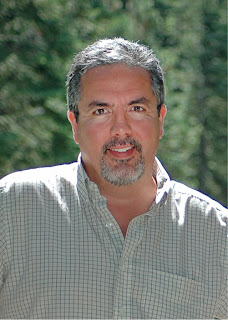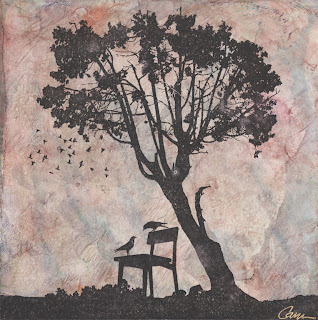 |
| Cameron Kaseberg |
From his earliest memories, Cameron has been involved in the creative and artistic world in one aspect or another. From finger painting and stitchery as a youngster, to a lifelong fascination with photography and digital imaging.
His interest in photography took him on a wonderful journey beginning with a job as teenager copying old photographs in the darkroom at Mel O’s Camera shop in The Dalles, followed by classes at the University of Minnesota and a stint as newspaper staff photographer at Lewis and Clark College. His photography brought him ribbons and awards, images published on magazine covers, time spent with friends and a great deal of satisfaction.
 |
| "Tall Tales" Solvent Transfer on clayboard |
The solvent transfer process involves "borrowing" inks and subject matter from various printed media as well as his own photos and graphics, chemically dissolving them and transferring the image onto a new surface. Much as a photographer can manipulate the camera image in many ways, the solvent transfer can be changed, arranged, composed and continually altered to express the artist's aims. Additional treatment with drawing or painting techniques may contribute to the uniqueness of each of Kaseberg's works. Although called transfer prints, each is one-of-a-kind.
 |
| "The Story Tree" Solvent Transfer on clayboard (box) |
 |
| Cameron on the art festival circuit. |
Work with community art organizations has also had a lasting impact on Cameron's artwork as well as personally. In 2009 Cameron was invited to join the High Desert Art League, professional artists' group working to support the advancement of its member artists through exhibitions, education and related outreach. That same year Cameron was appointed to the Redmond Commission for Art in Public Places, working to introduce art into select public locations and situations in order to create a unique sense of place and enhance the community identity of Redmond, Oregon. He gained an inside view of the art festival world when he joined the Art in the High Desert board of directors in 2010, a fine art festival in Bend, Oregon.
To learn more about Cameron's artwork and exhibition schedule visit www.kaseberg.com. For more information on his work in graphic design visit www.kasebergdesign.com.
No comments:
Post a Comment